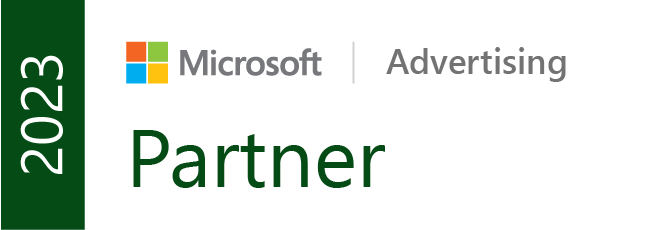How Google Ads quality score impacts paid search performance
Paid search performance is dependent on a myriad of factors such as bid strategy, campaign budget, keyword strategy, audience targeting, and asset type utilization. One significant performance factor that is often overlooked or neglected is quality score.
Your Google ads quality score has a heavy influence on the cost and efficiency of your paid search performance. Quality score directly impacts your ad rank, which dictates when and where your ads serve on the search engine results page (SERP) and at what cost. Neglecting your quality score can result in not only low performance, but it can also negatively impact the price you’re paying to run your ads campaign.
So what is quality score and how can you optimize your paid search campaigns towards it?
What is quality score
Quality score is a metric determined by Google based on how relevant and useful your keywords, ad content, and landing page are to the users you are serving ads to. Google essentially grades your keywords on a scale from 1-10 based on how well your ad quality compares to other advertisers. Your quality score is made up of three components:
- Ad Relevance
- Expected Click Through Rate
- Landing Page Experience
Each of the three factors above will be scored “Above average,” “Average,” or “Below average.” If any of your quality score elements are ranked “Average,” or “Below average,” you may have room for improvements and optimizations across your campaigns.
Ad relevance
Ad relevance is a measurement of how relevant your ad copy is to the keyword lists you’re bidding on. In order to maintain a high ad relevance score, you’ll want to ensure that the keywords you’re bidding on are included within your ad copy. This means that your keyword lists should be well-researched and align with your overall business goals and objectives.
For example, if you’re bidding on the keyword phrase, ‘red socks for sale,’ you’ll want to ensure that your ad copy mentions ‘red socks’ in order to ensure a high ad relevance rank.
At Schaefer, we keep ad relevance top of mind from the moment we kick off our media plans. Keyword and competitor research is conducted at the start of our media planning process and is then passed along to our creative team to utilize while writing ad copy. Our intent is to draft the most relevant ad copy to use alongside our keyword lists from the start of a paid search campaign. An important thing to note is that keyword lists and ad copy should never be set in stone. As campaigns ramp up and garner performance data, our media team reviews performance regularly and adds or removes keywords from campaigns based on performance. Keyword lists should remain in flux in order to keep up with consumer behaviors and ad copy should be reviewed and optimized as needed in order to maintain a high ad relevance.
If your ad relevance is ranked as “Average,” or “Below average,” here are a few best practices to keep in mind when reviewing your campaign performance:
- Plug more keywords into your ad copy. This is where it’ll be imperative to have relevant keywords that align with your business’s products or service offerings.
- Ensure there is a strong theme within each of your ad groups that can be addressed by the same ad copy. This will allow you to create ad copy that’s as focused on the keywords in your ad groups as possible.
- Audit your complete keyword lists and ensure that your keywords are organized into an adequate number of ad groups. If you notice too many keywords that can’t be easily addressed by the same ad copy, split those keywords into more defined ad groups so that you can draft unique ad copy that’s hyper-relevant to each ad group.
Expected click-through rate
Expected click-through rate is based on the historical CTR performance of your keywords and estimates how likely your ad is to be clicked on when served to a user. Similar to ad relevance, it’s critical to ensure that your keyword lists are aligned with your business and campaign objectives in order to provide users with the most helpful content that you can and ultimately increase your likelihood of a user clicking through on your ad.
For example, if you’re a business that sells red socks and you’re running a limited-time sale on your red sock selection, be sure to highlight your sale within your ad copy and test a strong, action-driving CTA in order to increase urgency across users who are being served an ad. If your ad copy doesn’t give the user a reason to click through to your landing page, they won’t be motivated to click through and shop on your site.
When approaching search campaign strategies and keyword lists, it’s imperative to keep your target audience top of mind. One question that our media team uses to guide both search strategy and ad copy creation is “What is the user’s intent behind this search query? Is it commercial, informational, transactional, or navigational?” Determining the intent behind a keyword phrase will help gauge if your keyword lists align with your overall campaign objectives (awareness, traffic, or conversion goals) and should guide the tone of language used within ad copy.
Similarly, when reviewing an active search campaign, our media team will check the intent of keyword lists and then gauge if our ad copy matches that intent. If keyword lists within a particular ad group have a consistent informational theme, yet ad copy is transaction focused (‘buy now’), our ad copy is not matching user intent. When ad copy is not providing users content in line with what they are seeking out, they will be less likely to click on the ad. This is a red flag to our team that we need to review keyword lists and/or ad copy to ensure we’re successfully providing users with content they’re actively searching for while still meeting a client’s campaign goal.
If your expected click-through rate is ranked as “Average,” or “Below average,” here are a few best practices to keep in mind when reviewing your campaign performance:
- Update ad copy to be more compelling to your target audience.
- Be sure that your ad copy matches the intent of your keywords.
- Include more actionable copy within your ad text to entice users to click through.
- A/B test various ad copy and CTAs to see what resonates most with your target audience.
- Include more information about your products or service offerings within your ad copy.
Landing page experience
The third and final component of your quality score is landing page experience. Simply put, this metric measures your landing page’s usefulness and relevance to users who click on your ad. Landing page experience can be impacted by technical aspects of user experience but it also has a lot to do with site content and its relevance to the keyword lists and ad copy you’re utilizing within your ad campaign.
For example, if you’re serving an ad about red socks to a user who searched for ‘red socks for sale,’ you’ll want to ensure that you’re redirecting that user to a landing page that mentions something about red socks.
Similar to expected click-through rate, user intent has a heavy impact on the landing page experience, assuming that your site doesn’t load slowly, is mobile-friendly, and is overall healthy from a technical standpoint. If our team finds that an ad group’s keyword list theme is consistently informational yet ads are directing users to a purchase or form fill page (more transactional), we are not providing users with an experience that is consistent with where they are within their purchase journey, which will result in a negative landing page experience.
Schaefer’s data-driven approach to media planning is measured against associated KPIs throughout the entire marketing funnel, meaning that we keep the full funnel and user journey in mind when creating media strategies. This ensures that our media meets a user wherever they are within the marketing funnel and provides them with the most useful and valuable content in order to work them further down the funnel and eventually to a conversion action. In order to accomplish this when creating a paid search strategy, we create complex, multi-campaign strategies that consist of brand campaigns to target users who are already further down the funnel and closer to a conversion action as well as various nonbrand and conquesting campaigns that serve to meet and inform our target audience higher up within the funnel and provide them with an enjoyable experience in hopes of gaining a returning and converting user in the future.
If your landing page experience is ranked as “Average,” or “Below average,” here are a few best practices to keep in mind when reviewing your campaign performance:
- Be sure that you’re directing users to appropriate landing pages and give the user the information that they were searching for. Sometimes improving your landing page experience can be as simple as changing the URL that you’re directing users to a more relevant landing page.
- Keep ad copy relevant to the content on the landing page you’re redirecting users to.
- Ensure that your site is mobile-friendly. A satisfactory mobile site experience will positively impact your quality score.
- Check your site’s loading speed and ensure that your pages aren’t loading at a slow rate.
Benefits of improving quality score
Improving your quality score will improve your ad rank, which garners positive benefits across your entire paid search campaign ranging from competitive ad placements to lower overall campaign costs. A high-quality score means that Google thinks you’re providing users with high-quality content that they will find useful, therefore your ads will be able to win ad auctions against your competitors and have more opportunity to serve to users, and ultimately drive up your conversion rates while driving down your cost per click and cost per conversion, resulting in a higher return on investment. Who doesn’t want that?
In summary
Quality score is a measurement of how relevant and valuable your ads and landing pages are to users. Low quality score can be an indicator that your paid search strategy and campaigns might be missing the mark when it comes to providing users with the most relevant and helpful content. Schaefer’s team recommends keeping quality score top of mind from the very beginning of paid search strategy ideation in order to ensure all aspects of quality score are met from the launch of a paid search campaign. Key ways to ensure quality score is not neglected throughout paid search planning include thoroughly researching keywords and ensuring they align with business objectives, organizing keywords into appropriately themed ad groups with unique ad copy tailored to each ad group’s underlying theme, and providing a positive landing page experience will all positively impact your quality score and can result in efficient and successful paid search campaign performance.






